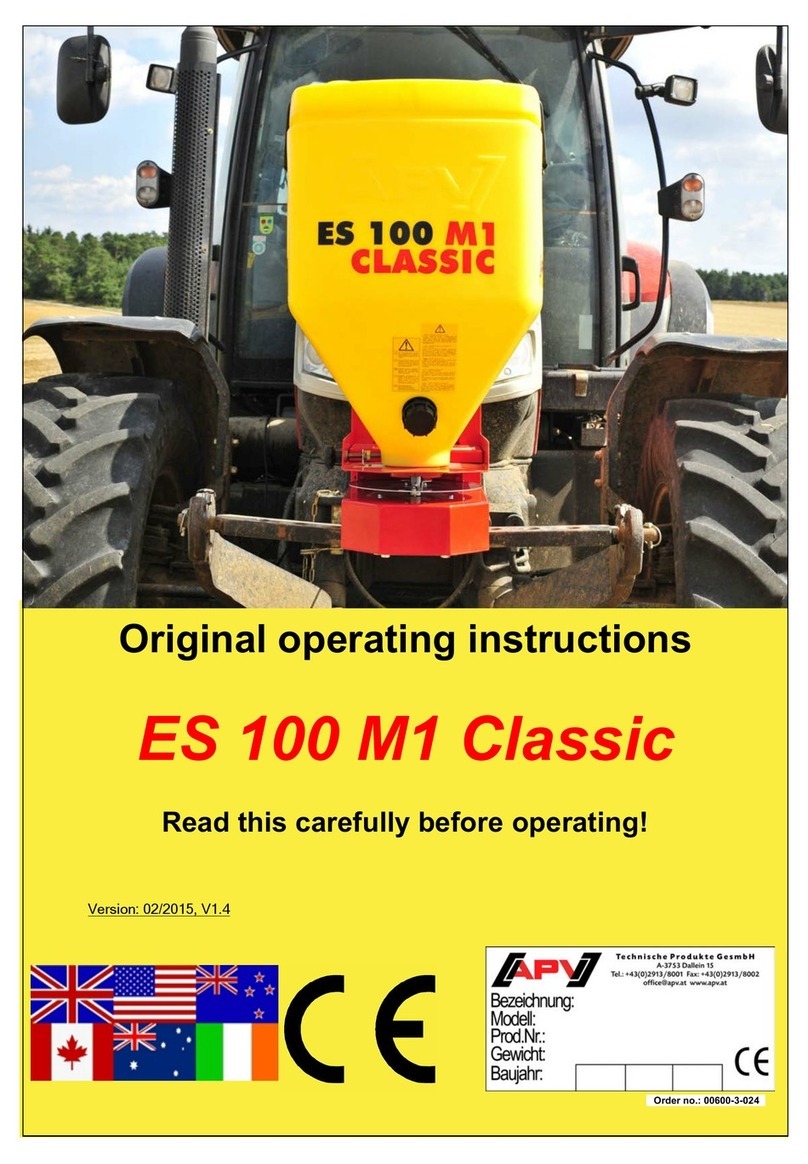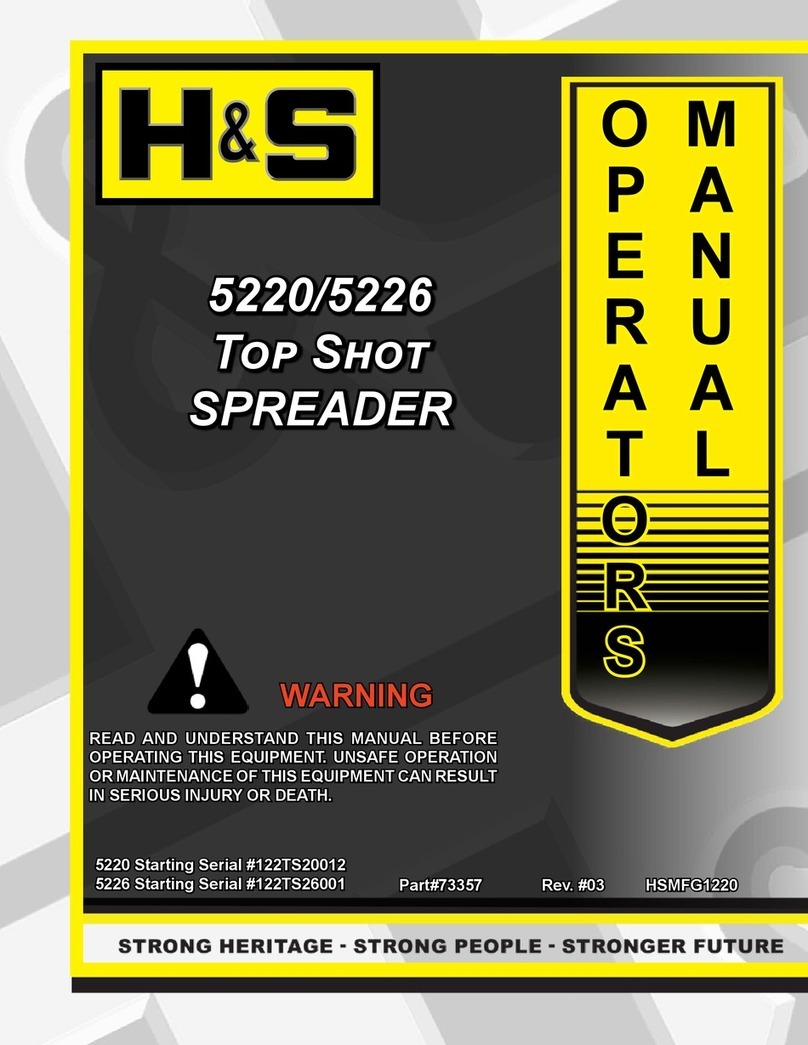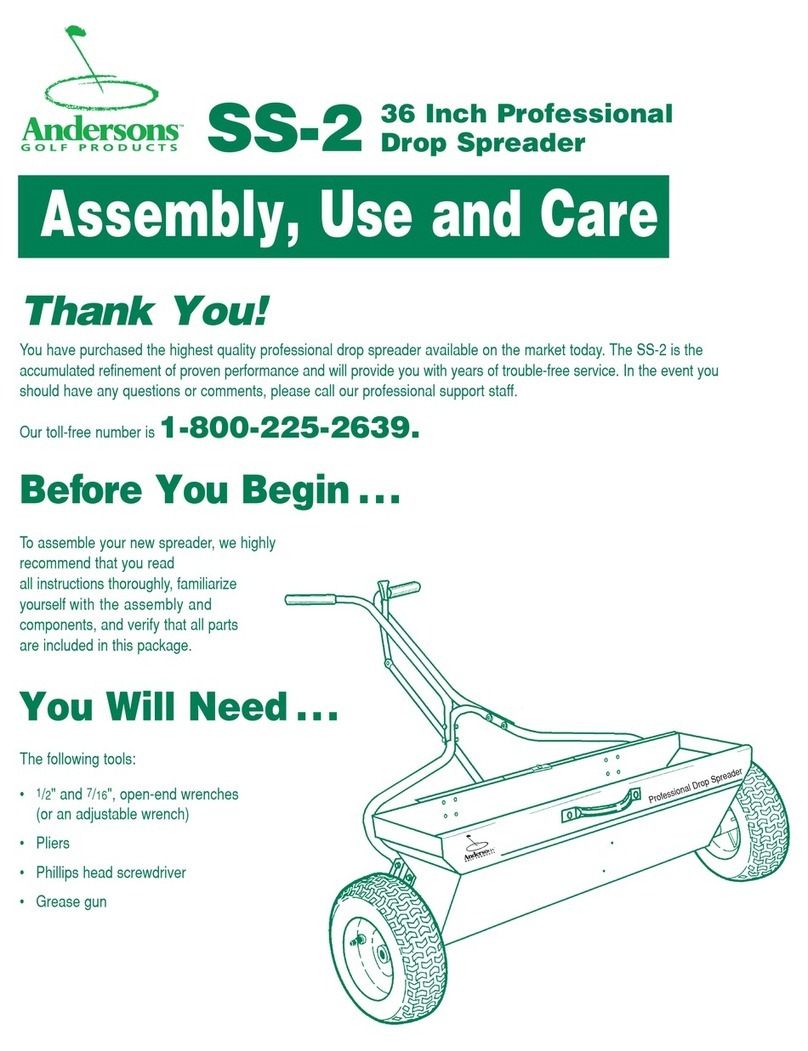
Table of contents
3
Table of contents
Preface ....................................................... 4
Target group of this manual 4
Meaning of symbols 5
Safety ......................................................... 6
For your safety 6
Other guidelines 6
Warning stickers 7
Safety requirements 10
Getting familiar with the machine ........... 23
Applications of the machine 23
CentreFlow spreading system 23
Adjust carefully 24
Spreading pattern 27
The ISO control system 31
Technical specifications 45
Technical specifications 46
Technical specifications 47
Before first use ......................................... 48
Inspection of the supplied machine 48
Mounting instructions 48
Tractor provisions 61
Mounting the coupling shaft 62
System settings ........................................ 64
Differences in operation 64
Entering system settings 65
Settings behind pin code 72
Spreader calibration 82
Alarms 85
Service information 87
Connecting to the tractor ......................... 90
Selecting linkage pin height 91
Connecting the machine 91
To be done before spreading .................. 95
Find the correct
settings for the spreader and
set it accordingly 95
Setting the spreader 100
Working width 103
Inclination 106
PTO shaft rpm 106
Application rate 107
Manual calibration test 119
Variable, externally driven application
rate 122
Filling 124
Check the spreading pattern (tray test) 127
Driving on the road ................................... 142
Before taking the road 142
Preparing the machine to be transported 143
Use in the field ........................................... 144
Adjusting the machine 145
Spreading on field 149
Start spreading 153
Border spreading 160
Stopping work 165
Failure and stoppage 166
Storing the machine .................................. 170
Cleaning 171
Disconnecting the machine 172
Maintenance ............................................... 175
Oil and grease content 177
Maintenance intervals 178
Lubricating points 179
Applying or adding grease 180
Add oil 181
Checking the hydraulic system 183
Checking and setting the dosing
mechanism 185
Checking and setting the discharge
point setting mechanism 188
Checking and setting the discharge
bushing height 190
Replacing agitator axle seal 192
Accessories ............................................... 194
General 194
Troubleshooting ........................................ 202
Troubleshooting table 202
Falling into disuse ..................................... 205
Liability ....................................................... 206
Liability 206
Complaints 207
Guarantee 207
EC declaration of conformity ................... 208
Notes .......................................................... 209
Index ........................................................... 211




























